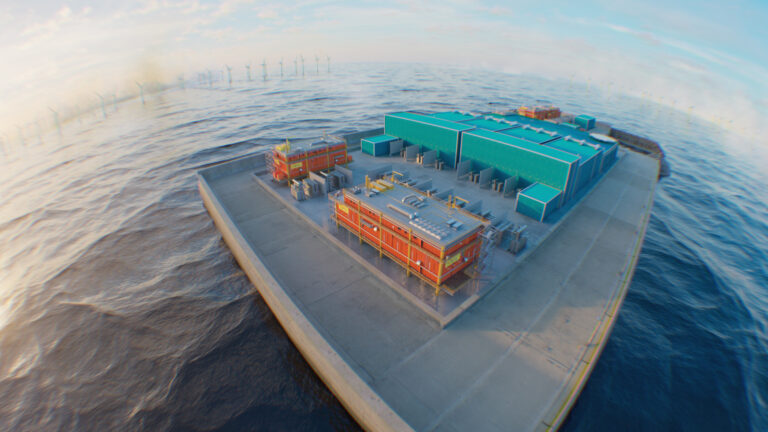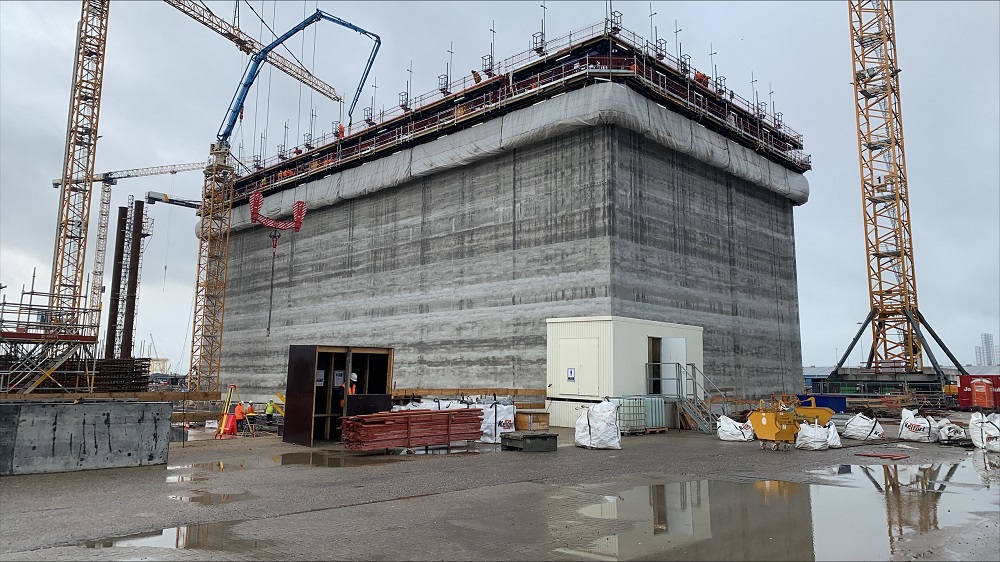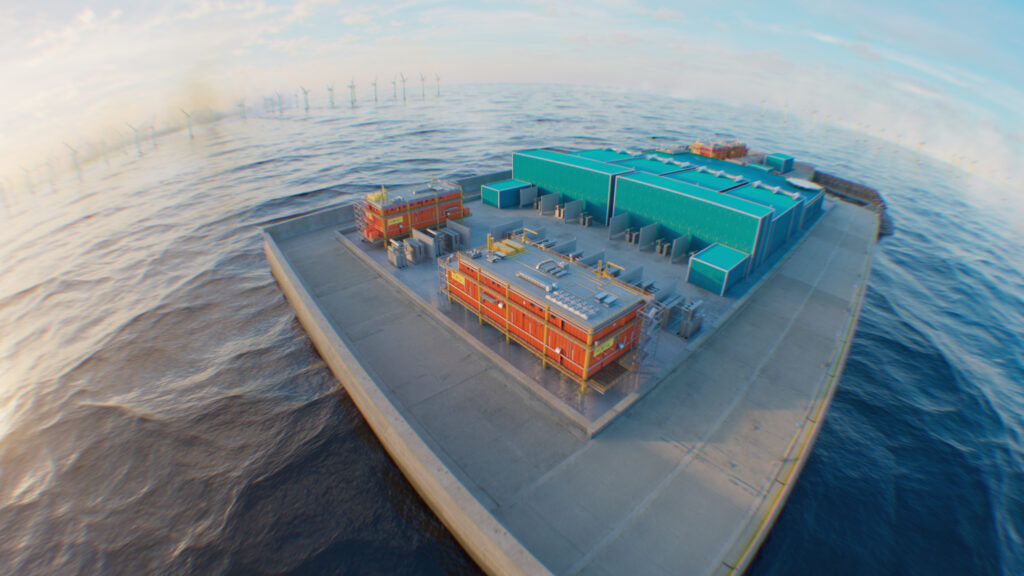The first of 23 caissons being built for Princess Elizabeth Island in Vlissingen, Netherlands, is almost complete and will be lowered into the North Sea this summer. Belgium's artificial energy island is the world's first.

A Belgian consortium consisting of DEME and Jan De Nul (TM Edison) is building the foundations of the energy island on behalf of system operator Elia Transmission.
Work began in Vlissingen in September 2023, with approximately 300 staff employed on site each day. As the first caisson nears completion, the scale of the project really becomes clear for the first time, developers said. Each concrete block is 57 meters long, 30 meters wide and 30 meters high, and weighs 22,000 tons.
It takes about three months to build one caisson. The manufacturing process is divided into five stages, and each stage takes 20 days. The caisson uses “runners” to move between the various work sites, which takes about six hours.
The most impressive construction phase is the second phase, which uses slipforming to create the caisson walls, the companies said. It grows by 10 centimeters every hour for about 10 days.

“The close collaboration between TM Edison and Area teams over the past few months has led to significant progress in realizing the world's first energy island.” Said luc vandenbourkeCEO of DEME Group.
“While construction of the caissons is in full swing, offshore work has also begun to enable these caisson installations at sea. This unique project combines innovative technology with a design that embraces nature. We offer Belgian companies like DEME new opportunities to demonstrate our pioneering role and expertise in building infrastructure to support the energy transition.”
Once the caisson is ready, a semi-submersible vessel transports it further downstream into the port, where it is placed underwater for temporary storage. It will then be moved to its final location in the North Sea this summer, weather permitting.
The caisson forms the outer wall of the energy island. The island itself will be constructed using approximately 2.3 million square meters of locally harvested sand. The island is expected to be completed by the end of 2026, and electrical installation will begin. Contracts for this will be tendered this year.
“As CEO of Jan De Nul Group, I am particularly proud of the construction of these caissons. They will soon go out to sea and form the outline of the world's first artificial energy island. It is a powerful example of co-building the land energy transition and a major step towards a sustainable future. This is something that we at Jan De Nul Group and our teams at TM Edison and Elia are very passionate about. That’s it.” Said julie de nullCEO of Jean de Null Group.
The energy island is partially funded by the EU's COVID-19 recovery fund, which was awarded a subsidy of around 100 million euros in consultation with the Belgian government. Both Belgium and European countries have also pledged support to implement a range of natural measures. In consultation with conservation and marine environment experts, a natural design was developed that enhances the biodiversity on and around the island.
Princess Elizabeth Island will be the world's first man-made energy island to combine both direct current (HVDC) and alternating current (HVAC). The island's high-voltage infrastructure bundles power cables from wind farms in the Princess Elizabeth Zone.
The island will also serve as a hub for future interconnectors. In fact, these “hybrid” interconnectors have two functions, leading to increased efficiency: Not only will they be responsible for power exchange between countries, but they will also be connected to new offshore wind farms in the northern North Sea, which will ultimately provide Belgium with large amounts of green electricity.
“Energy Island is of strategic importance for Belgium's energy transition. The island concept not only opens up a second offshore wind zone, but also offers important options for the future. It will be the first energy hub in the North Sea to be connected via interconnectors to wind farms in other countries with surplus available energy. Access to large amounts of sustainable and cheap electricity is a competitive advantage for our industry. and important for family prosperity.”
Said katherine vandenboerInterim Area Group CEO.
The Vlissingen construction site was recently visited by Belgian Prime Minister Alexander de Croo, Energy Minister Tinne van der Straaten and Secretary of State for Economic Recovery and Strategic Investment Thomas Delmine.
“The North Sea will be the engine of our energy independence and Princess Elizabeth Island will be a key part of this process.” Said Prime Minister Decroo.
“Belgium has long been a pioneer in offshore wind power and by continuing to innovate we will further strengthen its position for the future. We will have more opportunities to do so and guarantee sustainable and competitively priced energy for our people and businesses. We will put Belgium back on the map.”

Advertise with Offshorewind.BIZ
Get in front of your target audience in just one motion. OffshoreWIND.biz is read by thousands of offshore wind professionals every day.
Follow offshoreWIND.biz:


